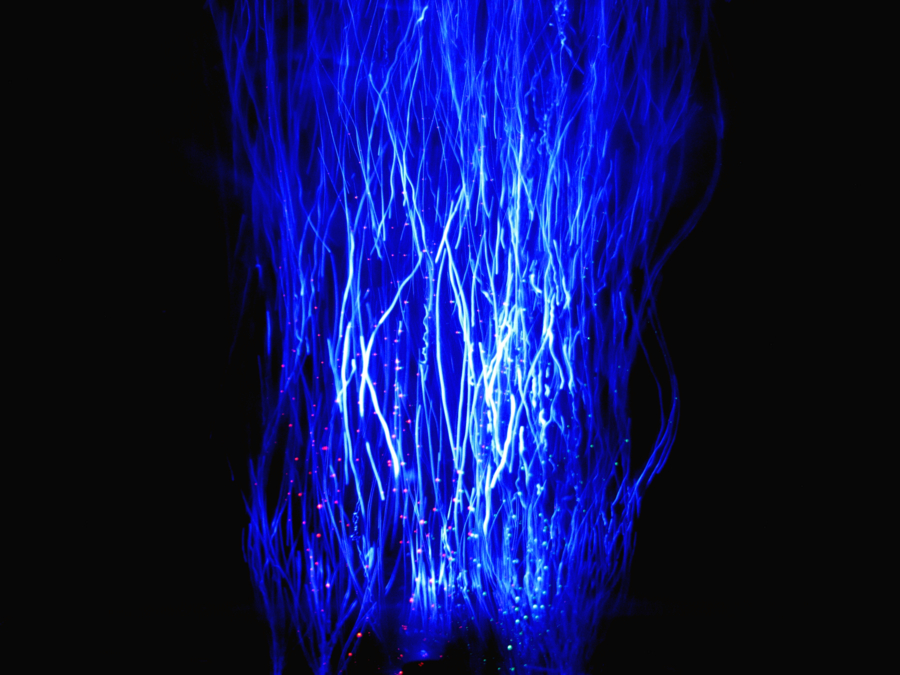By Ross Pitcairn for Spring 2013 Get Wet.
Read the Report
An aquarium ‘airstone’ generates an air jet, illuminated by red and blue LEDs.

An aquarium ‘airstone’ generates an air jet, illuminated by red and blue LEDs.
Previous Post
Air comes out of solution as water cools to freezing. If frozen quickly, both large and small bubbles are formed. Pure water freezes first at the periphery, trapping bubbles in the interior.
Next Post
When a water balloon is popped by a pellet gun, the contracting rubber skin and pressure drop disturbs the surface. The water seems to float momentarily before falling. Filmed at up to 1000 fps by a Casio EX-ZR100.
Categories
Search for content or authors
Flow Vis Guidebook
- Introduction to the Guidebook
- Overview 1: Phenomena. Why Does It Look Like That?
- Overview 2: Visualization Techniques
- Overview 3: Lighting
- Overview 4 - Photography A: Composition and Studio Workflow
- Overview 4 - Photography B: Cameras
- Overview 4 - Photography C: Lenses - Focal Length
- Overview 4 - Photography C: Lenses - Aperture and DOF
- Overview 4: Photography D: Exposure
- Overview 4 - Photography E - Resolution
- Overview 5 - Post-Processing
- Clouds 1: Names
- Clouds 2: Why Are There Clouds? Lift Mechanism 1: Instability
- Clouds 3: Skew - T and Instability
- Clouds 4: Clouds in Unstable Atmosphere
- Clouds 5: Lift Mechanism 2 - Orographics
- Clouds 6: Lift Mechanism 3 - Weather Systems
- Boundary Techniques - Introduction
- Dye Techniques 1 - Do Not Disturb
- Dye Techniques 2 - High Visibility
- Dye Techniques 3 - Light Emitting Fluids
- Refractive Index Techniques 1: Liquid Surfaces
- Refractive Index Techniques 2: Shadowgraphy and Schlieren
- Particles 1- Physics: Flow and Light
- Particles 2: Aerosols
- Particles 3: In Water
- Particles 4 -Dilute Particle Techniques
- Art and Science
- TOC and Zotpress test
- Photons, Wavelength and Color